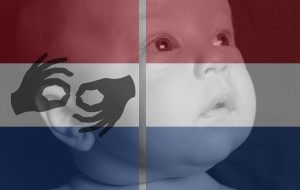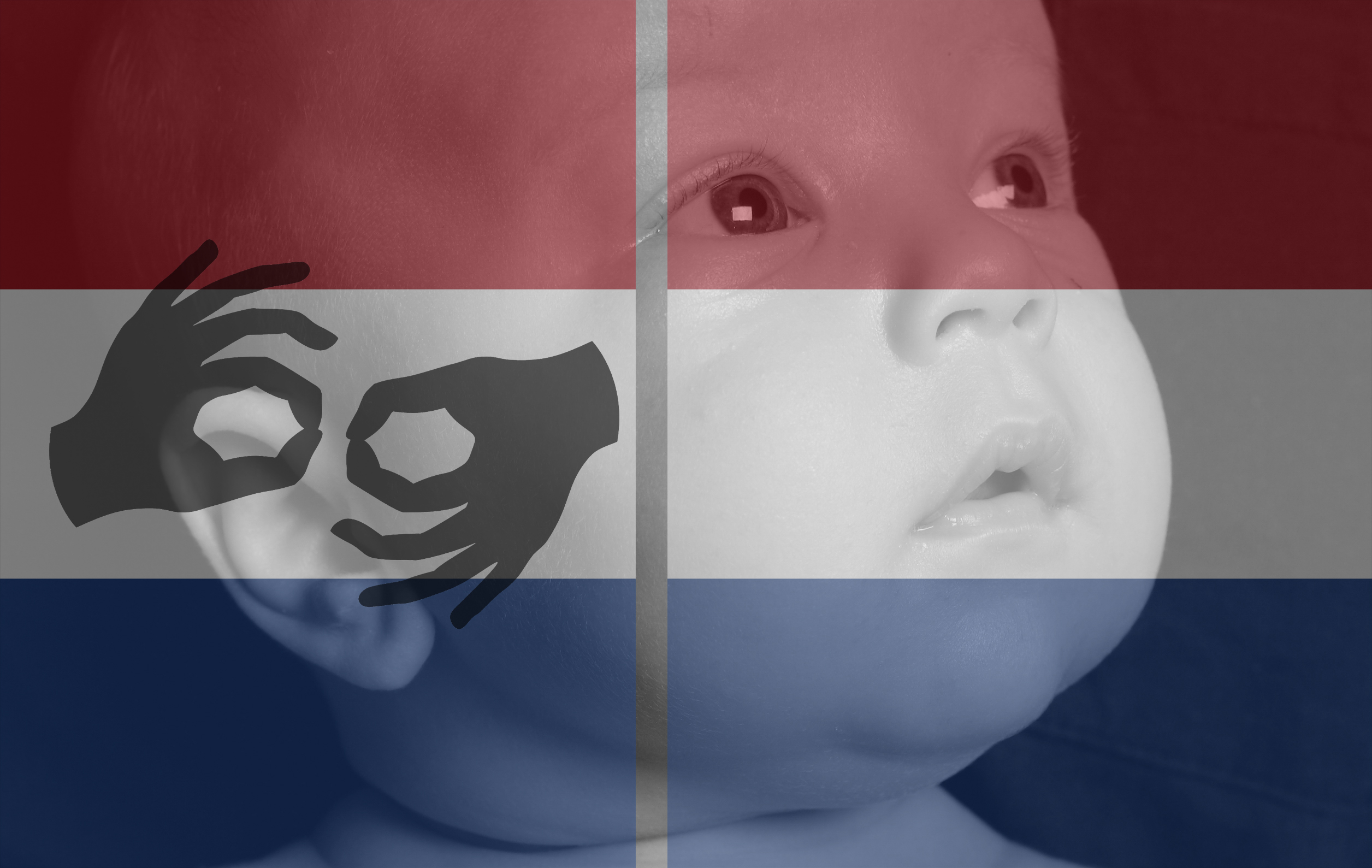This post is also available in Dutch.
You may speak two languages or at least know someone who does. So I’m sure you‘re familiar with bilingualism, but have you heard of bimodal bilingualism?

“Learning a signed language and a spoken language from birth” Picture taken by RayDumas and modified by Francie (License: CC By-ND 2.0)
What does the word bimodal in bimodal bilingualism refer to? Imagine that a hearing baby is born to deaf parents. He/she will acquire not only a signed language from birth but also a spoken language. He/she will learn how to sign at home and pick up a spoken language from other people in the environment such as hearing family members and those at daycare. Consequently, this baby will learn to communicate in two modalities: one with the mouth and the other with the hands (and facial expressions), also referred to as bimodal.
Languages are activated when you speak
When speaking (or reading) you are constantly making use of the words you know. Your knowledge of language is like a “mental dictionary”. It stores information such as whether the word is a verb or a noun, and what the singular and plural forms are of that word (e.g., house vs. houses). As a bilingual, this means words in both languages are in your mental dictionary. In fact, when you say a word in English (e.g., house) information on this word is available not only in English but also in your other language (e.g., Dutch: “huis” is a noun and the plural is “huizen” etc.). This process of one language influencing another is known as cross-language activation. Note that you are not usually aware of this activation. Moreover, cross-language activation can occur independent of whether you know two or many spoken languages, or a spoken and a signed language.
Are bimodal bilinguals different from bilinguals?
Speaking a signed and a spoken language offers partly the possibility to produce two languages at the same time, cool isn’t it? Note, this does not mean that you can produce whole sentences in both languages simultaneously, but only a couple of words. Let’s try to pronounce house in Dutch (huis) and in English (house) at the same time. You are likely to fail. But now, try to sign the word house (in Dutch Sign Language place both hands in front of your chest, keep your fingers straight and together, then form the shape of a house, starting with the roof (as shown in the movie)) and say house at the same time. Much easier, wasn’t it? This is, because you can use two modalities (hands and mouth) to produce a signed language and a spoken language, and are not restricted to a single modality (the mouth).
“Signing “house”in Dutch Sign Language” Movie made by Francie
To summarize, the languages you know (independent of whether they are signed or spoken) are always activated in your head. In other words, your languages are always by your side. Do you want to use words of two languages at the same time? Learn a sign language!
This blog has been written by Francie Manhardt. She is a PhD student working within the Multimodal Language and Cognition Group at Radboud University Nijmegen. Her research focuses on relations between spatial language and cognition in bimodal bilinguals.?
Edited by Nietzsche.
